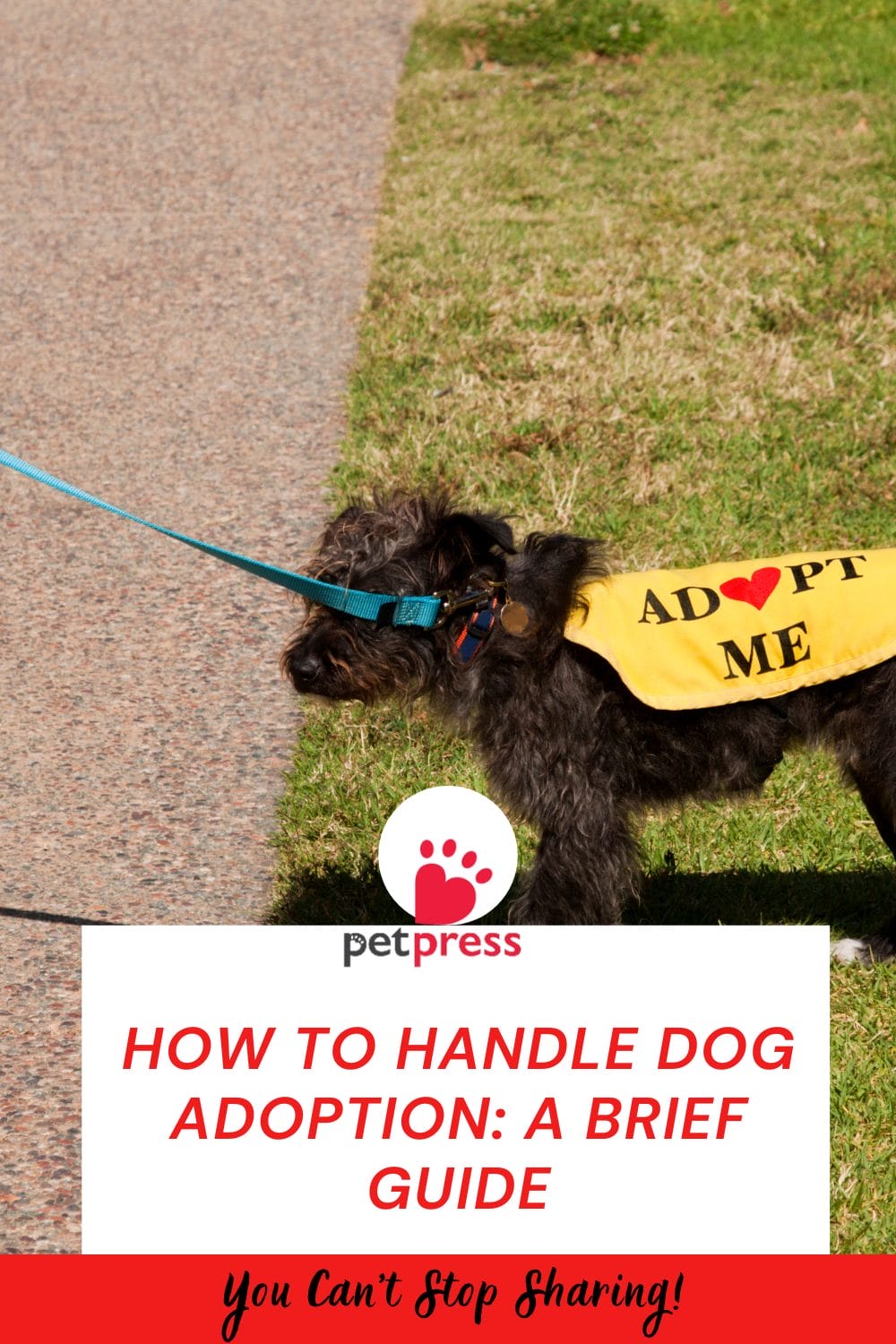
Adopting a dog is a life-changing decision that comes with immense joy and responsibility.
Bringing home a new dog—whether a playful puppy or a mature adult—requires preparation, patience, and care.
The first few days are critical for establishing trust and laying the foundation for a strong bond.
In this post, we will provide insights into How to Handle Dog Adoption, its benefits, and essential tips to make your new furry friend feel at home.
Why Dog Adoption Is Important?

Adopting a dog is not just an act of kindness; it’s a commitment to making a difference in the life of an animal in need.
Millions of dogs end up in shelters every year, often through no fault of their own.
By adopting, you’re providing a second chance to a deserving pet and freeing up space for other animals in shelters.
Additionally, adoption helps combat unethical practices like puppy mills that often prioritize profit over the welfare of animals.
It sends a strong message about dog adoption and the value of compassion and responsible pet ownership.
Benefits of Dog Adoption

Saving a Life
When you adopt a dog, you’re giving it a chance to thrive in a loving home. Many shelter dogs face euthanasia if not adopted within a specific timeframe.
Cost-Effective
Adopted dogs are often spayed/neutered, vaccinated, and microchipped before leaving the shelter, reducing your initial expenses compared to buying from a breeder.
Promotes Gratitude
Adopted dogs often show immense gratitude and loyalty. Many owners report that their adopted pets form deep emotional bonds with their new families.
Variety of Choices
Shelters house dogs of all breeds, ages, and temperaments, allowing you to find a pet that matches your lifestyle and preferences.
Reduces Overpopulation
Adoption helps control the pet population by reducing the demand for commercially bred dogs.
Tips to Handle Dog Adoption: The First Few Days

Prepare Your Home
Before bringing your dog home, create a safe and welcoming environment. Set up a designated space with essentials like:
- A comfortable bed
- Food and water bowls
- Toys and chew items
- A crate or playpen for secure resting
Gather Supplies
Have the following items ready:
- High-quality dog food
- A leash and harness
- ID tags
- Grooming supplies
Give Them Space
Your new dog may feel overwhelmed or anxious in their new surroundings.
Allow them time to explore and adjust at their own pace. Avoid overwhelming them with too much attention or activity initially.
Set a Routine
Dogs thrive on consistency. Establish a schedule for feeding, walking, and bathroom breaks. This routine will help your dog feel secure and reduce anxiety.

Introduce Gradually
If you have other pets or family members, introduce them to the new dog slowly and under supervision. Keep initial interactions short and positive.
Observe Behavior
Pay attention to your dog’s body language. Signs like tucked tails, cowering, or excessive barking may indicate stress. Offer comfort and reassurance but don’t force interactions.
Start Basic Training
Begin teaching simple commands like “sit” and “stay” to establish boundaries and build communication. Use positive reinforcement, such as treats and praise.
Schedule a Vet Visit
Even if the shelter has provided medical care, a follow-up visit with your veterinarian ensures your dog’s health and establishes a baseline for future care.
Be Patient
It may take days, weeks, or even months for your new dog to settle into their new home fully. Patience and understanding are key.
What are the Mistakes to Avoid During Dog Adoption?

Overwhelming the Dog
Introducing your dog to too many people or pets immediately can cause stress. Limit interactions until your dog feels more comfortable.
Lack of Preparation
Failing to gather supplies or prepare your home can make the transition chaotic and stressful for both you and your dog.
Skipping Training
Neglecting to start basic training early on can lead to behavioral issues. Consistency is crucial for setting boundaries.
Ignoring Body Language
Misreading or ignoring signs of discomfort can hinder trust-building. Learn to recognize when your dog is feeling scared or overwhelmed.
Unrealistic Expectations
Expecting instant obedience or affection can lead to frustration. Remember, trust takes time to build.
Conclusion

How to Handle Dog Adoption is an enriching experience, but it comes with responsibilities that start the moment you bring them home.
By preparing in advance, setting a routine, and offering patience and love, you’ll help your new companion adjust and thrive in their new environment.
Remember, the first few days are just the beginning of a lifelong bond filled with joy and companionship.
FAQs
Adjustment periods vary, but most dogs start to feel comfortable within a few weeks. Some may take longer, especially if they’ve experienced trauma or neglect.
Crate training can be a valuable tool for providing your dog with a secure space. Ensure the crate is comfortable and never use it as a punishment.
Gradually acclimate your dog to being alone by starting with short absences. Provide distractions like toys or treats and avoid dramatic departures and arrivals.
Aggression can stem from fear or insecurity. Consult a professional dog trainer or behaviorist to address the issue safely and effectively.
If your dog is fully vaccinated, you can begin walks right away. If not, limit outdoor activities to safe, enclosed areas until vaccinations are complete.


GIPHY App Key not set. Please check settings